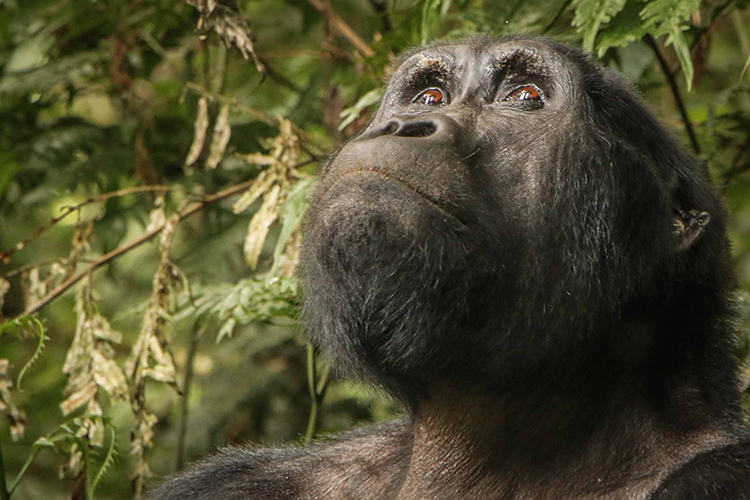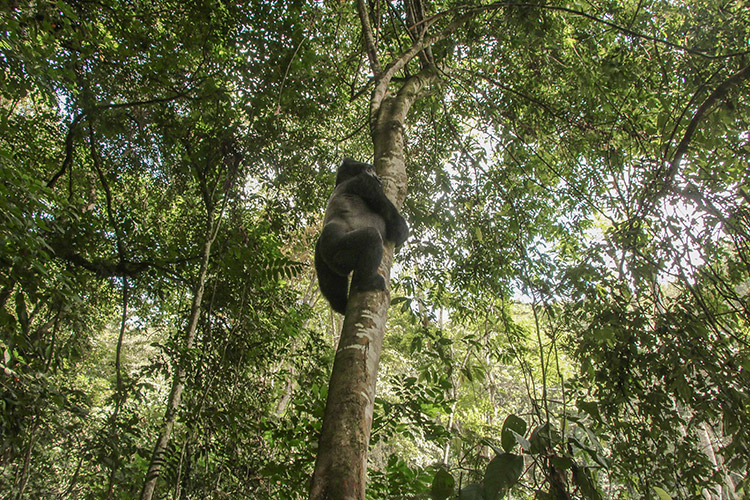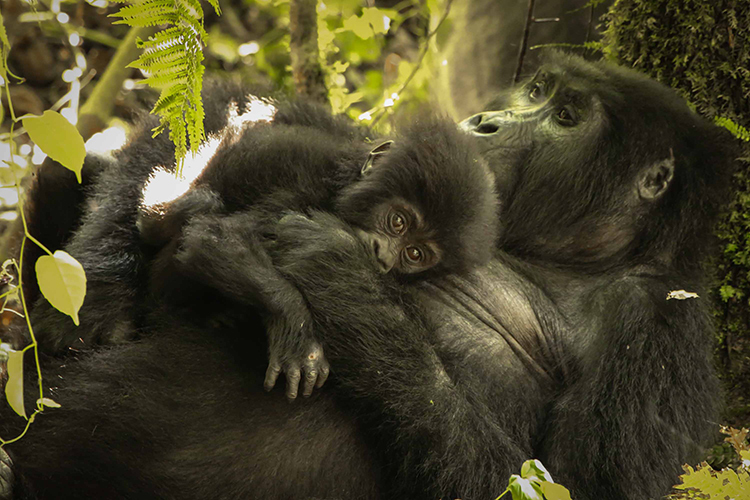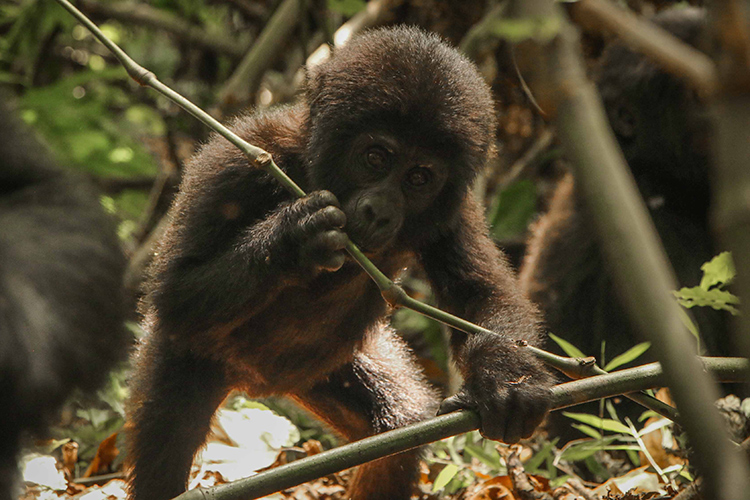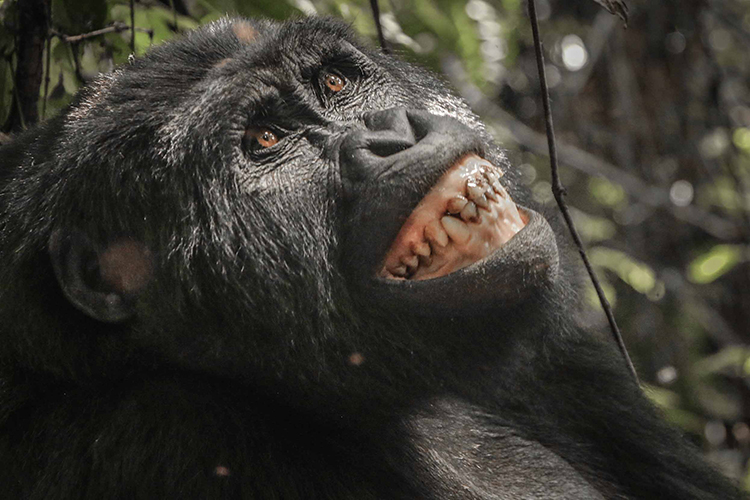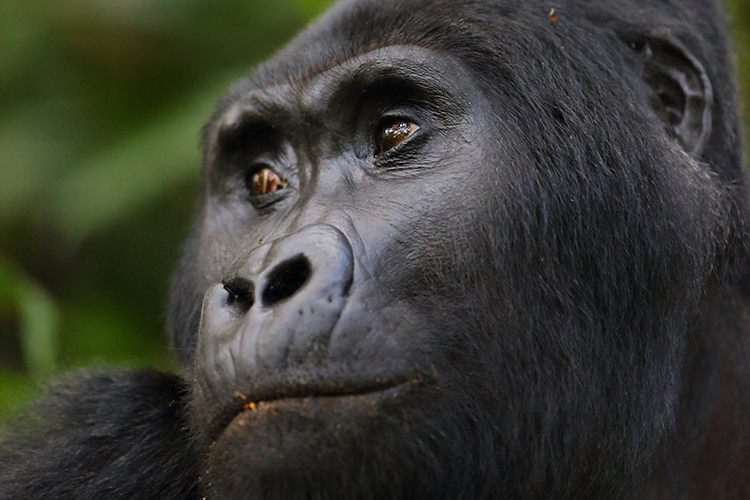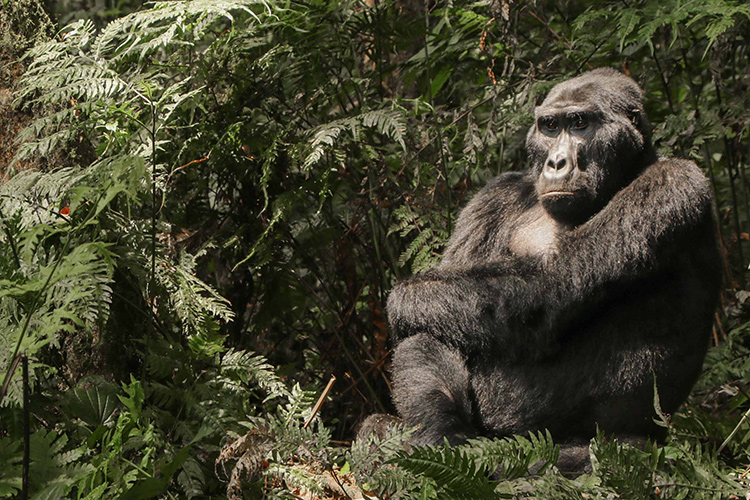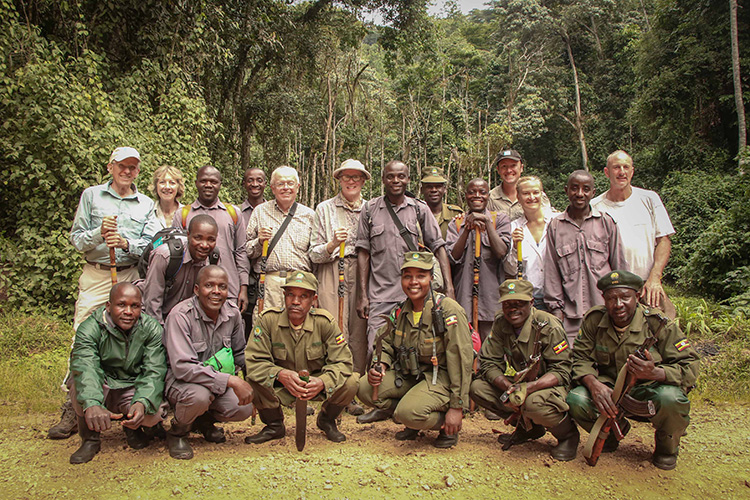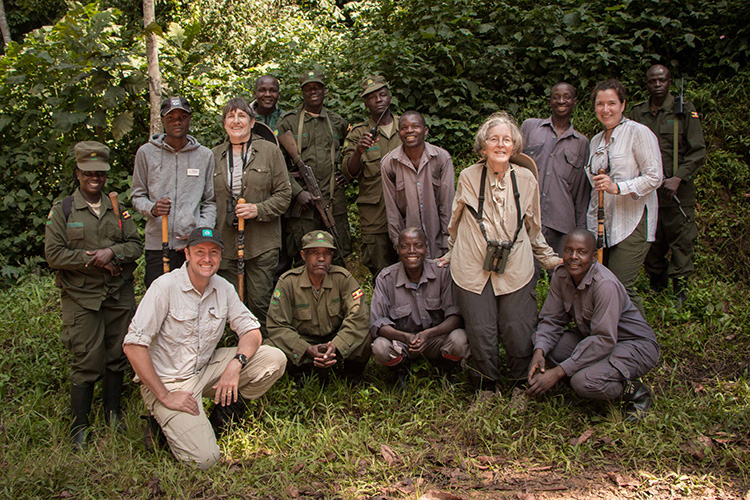Field Journal: Uganda Gorilla Trekking
Posted by Marco Tonoli
in Africa
Naturalist and expedition leader Marco Tonoli describes an encounter with a group of Mountain Gorillas on a recent Uganda gorilla trekking expedition with Apex.
Uganda’s Mountain Gorillas
In the early 1960’s, at the behest of Louis Leakey, Dian Fossey found herself in the heart of the “Dark Continent”, about to embark on what would be a lifelong endeavor to understand the complexities of the life of Mountain Gorillas. Standing on the edges of the rainforest, in preparation for the journey ahead, she walked amongst the local villagers to assemble a team of porters to assist her as she set off on the trail of these then misunderstood creatures. Fast forward over 50 years, and we find ourselves in what seems to feel like a carbon copy of that very moment.
Bwindi Impenetrable Forest – Our Trek Begins
We have heard that a group of gorillas, known as the Habinyanja group, had been seen deep in the forest the previous day, and that the trackers were close in pursuit. We walk amongst a crowd of enthusiastic men and women porters, who chatter with excitement. And we assemble a team that will assist our expedition into the forest. With our team in place, and after a short journey by vehicle, we stand at the edge of Bwindi Impenetrable Forest. The dense matt of vegetation in front of us is both mysterious and inviting. Our head tracker gathers everyone around and we listen intently on how the trek will unfold. The gorillas have been located by the lead trackers early this morning, and have been seen deep in the forest a little over an hour’s walk from the forest edge. With our gear ready, the trek begins.
The Silverback Protects His Family Group
Now understanding gorilla behavior is crucial to finding them in this densely-vegetated forest. They are highly social creatures, living together in cohesive groups dominated by an adult male. In comparison to Chimpanzee’s, dominance of males is almost entirely due to size. There is a significant difference in the size of males and females. Males, with age, develop a grey to silver color to their hair over their backs and torso, and aptly earn the name “silverback”. It is the silverback that brings stability to the group, and females form strong bonds with the dominant male to ensure their safety and access to superior genes.
Finding Sleeping Nests and Feeding Routes
Gorillas generally prefer to avoid contact with other groups, and move through a particular home range searching for good access to suitable plants to feed on. When tracking gorilla, this is a vital bit of information to know and assists greatly in finding them. There is no rush in getting the day started for a gorilla. After a slow start to the day, they will spend a few hours foraging for a variety of plants, but largely wild celery and galium vines, and if the season is right, a fruiting fig tree. This is usually followed by an afternoon rest, a late afternoon feed and then the process of building sleeping nests, which are built daily. It is these sleeping nests that our trackers look for and then follow the feeding route until the gorillas are found.
Simply describing the basics of gorilla behavior, however, is an unjust account of their true nature. As you talk with the trackers and guides, each with their own stories and encounters, you quickly realize that every group of gorillas and every individual has their own unique story. And while it is considered bad practice to anthropomorphize animal behavior, with our exceptionally close relation to these creatures, one realizes it is virtually impossible not to do.
Observing Group Behavior
The group we were on the trail of, known as the Habinyanja group, is dominated by an old and experienced silverback that has earned the name “Mabara”, which means charcoal. Mabara has been particularly aggressive of late. This is not due to our presence, but due to the social dynamics of his group. Mabara is a little over 35 years old, and this is old for a silverback. One of his sons, Kavuyo, is now in his early teens, a large black-backed male who is eager to gain dominance. This has been putting Mabara on edge, and one is not quite certain just what mood you will find him.
Our first trek with the Habinyanja group found them on the move and in search of food. Mabara seemed stressed, and the occasional outburst of screaming and short charge showcased his mood. At one moment, his group had moved ahead to a fruiting fig tree, and we stayed close so as not to lose them. When Mabara finally made his way to the group, he realized there were some pale primates in his path, and the vegetation erupted with tree thrashing, branch breaking and dragging. The forest echoed with his screams as he thundered past us to ensure his group’s safety. We soon discovered the reason for his mood was that Kivuya, the younger blackback, who typically remains on the periphery of the group, was now making himself very present and moving towards the center of the group’s activity. The silverback paced up and down around the fig tree, keeping his eye on all.
Up-close Encounter
Yet on our second day’s trekking, we found Mabara in a gentle and tolerant mood. Kivuya, the blackback was far from the group, and Mabara was more relaxed. We were able to sit and spend an entire hour in an open patch of forest and watch the young males boisterously play amongst themselves, swinging on branches and rolling down the slopes in their rambunctious manner. At one moment, a young male, no older than a year, slowly approached me with both caution and curiosity. When in arms reach, he slowly stretched out his arm to put his hand a few inches from my shoe, quickly prodded my shoe, and then bolted back to his mom.
One of the Greatest Wildlife Experiences
It is nothing short of an absolute privilege to be witness to these magnificent primates. The ability to see these Mountain Gorillas is largely due to a collective effort by the park’s authorities and visiting wildlife enthusiasts. Income generated from gorilla trekking has filtered down to the surrounding villages, and one can feel the sense of pride the Ugandans have for “their” gorillas, forest and country. The 400-odd gorillas in Bwindi Impenetrable Forest have brought prosperity to those that surround the forest. These gorillas have ensured a sense of commitment to protect the rainforest which they require. It is one of ecotourism’s greatest successes. So, while one visits these incredible creatures and experiences one of the greatest wildlife experiences on our planet, one also leaves knowing that our presence in this area instills a sense of pride in local Ugandans and contributes to the future of Mountain Gorillas. Uganda gorilla trekking is a “must do” experience for any nature lover!
Learn More about Uganda Gorilla Trekking
To discover more about seeing the Mountain Gorillas of Uganda with Apex, visit our Uganda expedition page.

